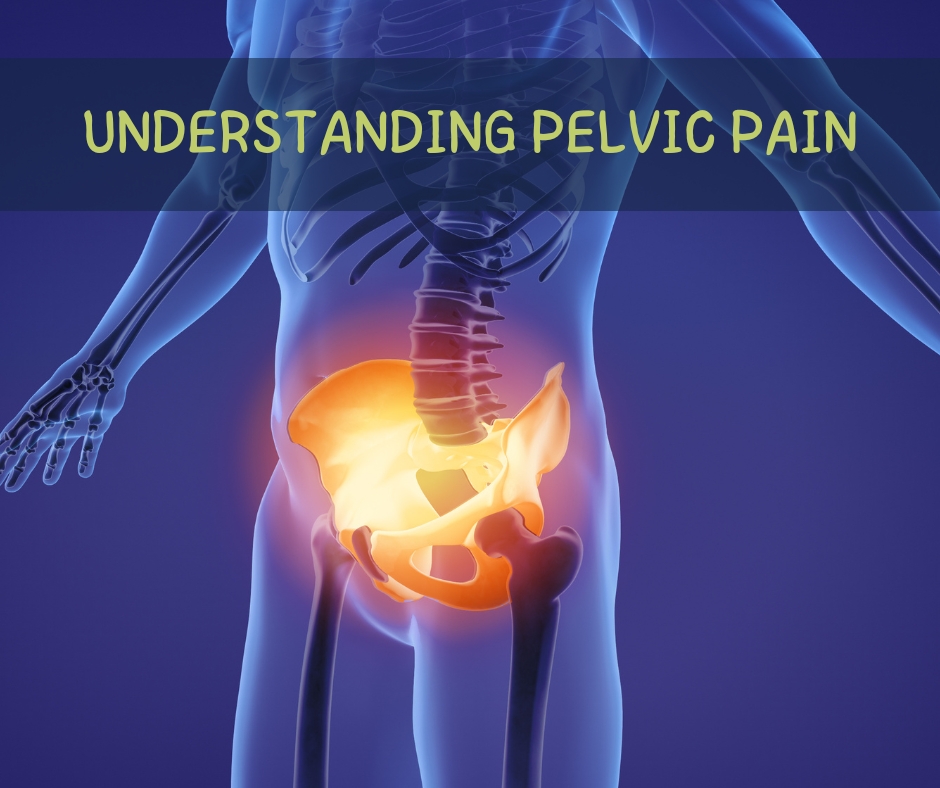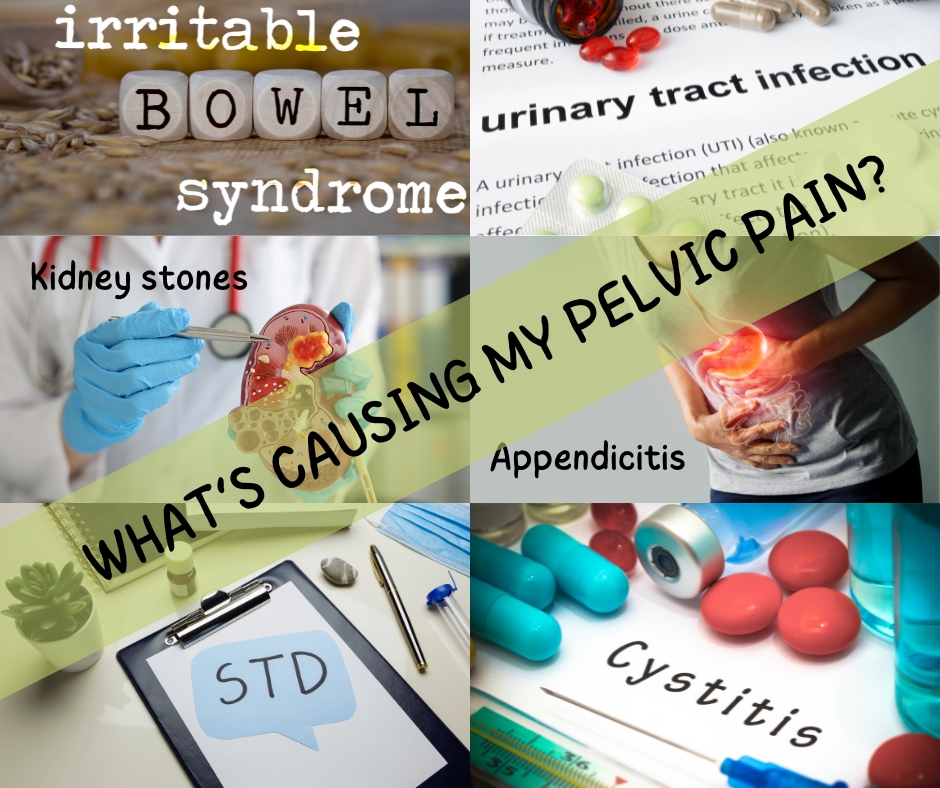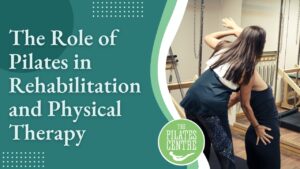Introduction:
Pelvic pain is an intricate issue that transcends gender boundaries. It can manifest as a persistent ache, discomfort, or pressure in the lower abdomen, accompanied by symptoms like abnormal vaginal bleeding and lower back pain. Given the diverse range of causes, it’s crucial to understand that treatments for pelvic pain can vary significantly. In this article, we will explore the realm of pelvic pain from a medical perspective and delve into how exercise can play a complementary role in your journey to recovery.

Understanding Pelvic Pain:
Pelvic pain can afflict both men and women, with its origins often connected to the urinary or gastrointestinal tracts. In females, the reproductive system is a common source of pelvic pain, where conditions such as endometriosis, fibroids, or ectopic pregnancy can be contributing factors. If you experience any form of persistent pelvic pain, it is imperative to consult your healthcare provider for a proper evaluation and diagnosis.
Our Blog aims to shed light on the intricacies of pelvic pain, offering insights into its possible causes and symptoms that can help differentiate between various pelvic conditions. Additionally, we will explore the potential treatments available for pelvic pain and the scenarios that necessitate urgent medical care.
The Anatomy of Pelvic Pain: A Brief Overview
Pelvic pain typically finds its location in the lower torso, within the pelvic cavity. This region, resembling a bowl-like structure, begins at the top of your hip bone, roughly level with your navel, and extends down to the groin. It is important to note that the base of the pelvis comprises a network of muscles and ligaments collectively known as the pelvic floor. These vital structures provide support for the bladder, rectum, descending colon, and reproductive organs. Any issues involving these organs or muscles can contribute to the onset of pelvic pain.

Causes of Pelvic Pain:
While the causes of pelvic pain may differ between genders, several underlying factors remain common to both men and women. Irrespective of gender, these universal causes include:
1. Irritable Bowel Syndrome (IBS): IBS, characterized by a dysfunctional gastrointestinal system, exhibits symptoms like abdominal pain, changes in bowel movement patterns, diarrhea, constipation, bloating, incomplete emptying, and the presence of mucus in stool.
2. Urinary Tract Infections (UTIs): A UTI, often caused by bacterial infection of the urethra, bladder, or kidneys, presents symptoms like pain over the bladder (low in the pelvis), frequent urination, burning pain during urination, an urgent need to urinate, and even blood in the urine.
3. Kidney Stones: These painful conditions, caused by mineral buildup in the urine, can lead to symptoms such as pain during urination, a strong urge to urinate, blood in the urine, nausea, and vomiting.
4. Sexually Transmitted Infections (STIs): STIs, encompassing a range of diseases spread through sexual contact, can result in symptoms like genital discharge, pain during urination, the presence of lumps, blisters, sores, rashes, or warts, vaginal bleeding, and itching genitals.
5. Appendicitis: An acute and severe inflammation of the appendix, appendicitis presents sudden abdominal pain, loss of appetite, fever, vomiting, constipation, and diarrhea.
6. Cystitis: Urinary bladder inflammation, often caused by infection, may lead to pelvic pain, along with symptoms such as cloudy urine, bloody urine, strong-smelling urine, burning during urination, low-grade fever, and an urgent need to urinate.
When to Seek Medical Assistance
For individuals experiencing sudden, severe pelvic pain, prompt medical attention is imperative, as it may signify life-threatening emergencies like appendicitis or ectopic pregnancy, both of which may require immediate surgical intervention.
If you have pelvic pain that does not alleviate or worsens, it is advisable to seek evaluation by a healthcare provider. Many causes of pelvic pain can become progressively serious if left untreated. This is particularly crucial for those menstruating, as mild cramping and pain associated with the menstrual cycle are considered normal, unless the pain reaches high levels, a condition known as dysmenorrhea.

The Role of Exercise in Managing Pelvic Pain
Given the multifaceted nature of pelvic pain, its treatment varies significantly depending on the causative factors. Conditions rooted in bacterial infection, such as urinary tract infections (UTIs) and some sexually transmitted infections (STIs), can be effectively treated with antibiotics. Other conditions, such as cancer or fibroids, may require medication, surgical procedures, or a combination of both. Life-threatening conditions like appendicitis or ectopic pregnancy demand emergency surgery.
However, for chronic pelvic pain, exercise and physical therapy may be a valuable component of your treatment plan. Physical therapy, including pelvic floor exercises, can help alleviate discomfort, enhance muscle tone, and improve blood flow to the pelvic region. It’s essential to note that exercise should be pursued under the guidance of a healthcare provider, particularly if your pelvic pain is persistent or severe. Seek professional advice to ensure that exercises are tailored to your specific needs.
Taking Control of Your Well-being with Exercise
Incorporating exercise into your daily routine can be a positive step toward managing pelvic pain and enhancing your overall quality of life. If you have questions or require guidance on pelvic floor exercises, consider reaching out to us at the Pilates Centre. We are here to support you in your journey to recovery. Feel free to contact us via email at info@pilatescentre.es or reach out to John and our team at +34 610 30 60 05. Our dedicated professionals are more than willing to provide you with personalized advice to address your unique requirements.
Conclusion:
Pelvic pain is a complex and multifaceted issue that can affect individuals of all genders. While medical consultation is indispensable for accurate diagnosis and treatment, exercise can play a pivotal role in complementing your journey to recovery. To ensure a holistic approach to pelvic health, consider seeking professional medical guidance alongside exercise.
Remember, for a holistic approach to pelvic health, it’s advisable to seek professional medical advice in conjunction with exercises. Should you require guidance tailored to your specific needs, don’t hesitate to reach out to us at the Pilates Centre.

John McCallum
is an esteemed, Fully Certified Comprehensive Classical Pilates Teacher and takes immense pride as the proprietor of the distinguished Pilates Centre located in Jalon, Spain. His remarkable journey in the realm of Pilates commenced back in 2006, a pivotal juncture when he confronted the diagnosis of three slipped discs in his lower back. Pilates emerged as a beacon of profound hope and rejuvenation in his life. Instead of succumbing to the prospect of surgical intervention, Pilates gracefully assumed the role of his lifeline.
This transformative experience impelled him to make a resolute decision that would reshape his life’s trajectory. Following his journey to become a Pilates Teacher, he passionately extended the benefits he had personally garnered to those in need. This also took him to travel to other countries to continue to learn and have a fuller understanding of the method.
Fueled by an unwavering passion for Pilates, he has forged a dynamic collaboration with a reputable research institution. This strategic alliance enables him to deliver precise and illuminating insights, fostering support and empowerment for individuals interested in the power of this method. His literary contributions have garnered distinction within an array of esteemed global publications.




